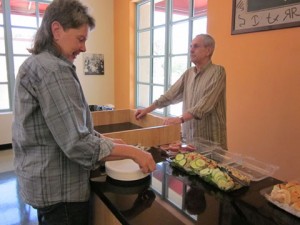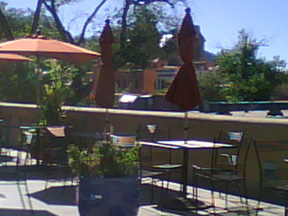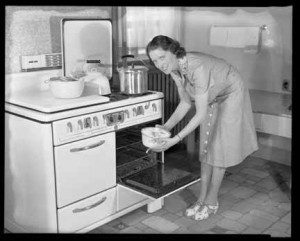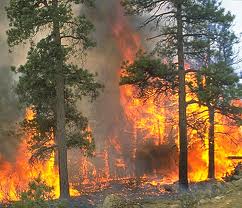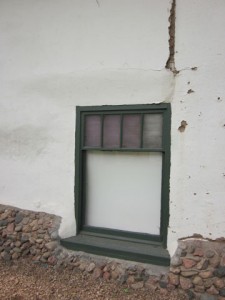 You don’t have to be a winner of HGTV’s Design Star to see that the windows in the Palace of the Governors could use some help.
You don’t have to be a winner of HGTV’s Design Star to see that the windows in the Palace of the Governors could use some help.
Hey – when you’re a National Historic Landmark with a 400-year-old history, some of your edges can tend to the ragged side of things. Wood gets old and porous. Water seeps past cracked plaster into adobe bricks. Foundations shift and settle.
But budgets are tight all over, and the cost of repairing a historic building can soar beyond a new screen door for your average bungalow. What was the New Mexico History Museum/Palace of the Governors to do?
Well, we turned to some of our most trusty and energetic supporters, the members of Los Compadres. Building on their shared love for the Palace of the Governors, Los Compadres’ members have for years given their volunteer all for the museum. During the warmer months, its members lead the Downtown Walking Tours that give tourists and locals alike a learned look at Santa Fe’s history. At the History Museum’s grand opening in May 2009, they stood in the heat for hours, scooping ice cream that they provided to a hot horde of first-time visitors. During last year’s Christmas at the Palace and Las Posadas, those bizcochitos you might have nibbled were provided by none other than Los Compadres.
Most important, they dove into fund-raising efforts to create the History Museum, beating the odds and ensuring we opened with a stunning array of exhibitions.
The majority of that work is done so quietly that you might be unaware of it. But their latest project – “Windows on History” – will soon appear before your very eyes.
 Last year, Los Compadres adopted the Palace’s aging windows as a fund-raising cause, setting a goal of $40,000. They sold $5 raffle tickets, arranged a special showing of the Santa Fe Fiesta Melodrama, held private dinners with history experts as speakers, and offered 25 limited-edition prints of Jack McCarthy’s linoleum-cut version of a Palace window (left) as a premium. (The Palace Press stepped up by producing the prints, using handmade paper that included, fittingly, adobe mud.) The hustle caught the eye of the Santa Fe New Mexican, which wrote a lovely story that brought in a new wave of donations.
Last year, Los Compadres adopted the Palace’s aging windows as a fund-raising cause, setting a goal of $40,000. They sold $5 raffle tickets, arranged a special showing of the Santa Fe Fiesta Melodrama, held private dinners with history experts as speakers, and offered 25 limited-edition prints of Jack McCarthy’s linoleum-cut version of a Palace window (left) as a premium. (The Palace Press stepped up by producing the prints, using handmade paper that included, fittingly, adobe mud.) The hustle caught the eye of the Santa Fe New Mexican, which wrote a lovely story that brought in a new wave of donations.
In the end, Los Compadres raised $54,000 – much of it in those highly cherished $5, $15, and $25-sized donations that show broad-based support for a fund-raising effort. With money in hand, the museum was able to look for a contractor, and soon as you know it, they’ll start replacing some of the most seriously impaired windows. (Just how many depends on what the contractors find once they open the building’s centuries-old walls.)
Los Compadres’ latest goal is to broaden its statewide reach, in part by creating a new category of supporters, the “Ambassadors.” Members want to reach beyond Santa Fe’s borders to carry the New Mexico History Museum/Palace of the Governors’ word to communities throughout the state and to welcome visitors from other historical societies to both the old and the new of our museum complex. Got an itch to devote some time to preserving New Mexico’s past? Interested in learning more? Contact the Museum of New Mexico Foundation at 982-6366.



